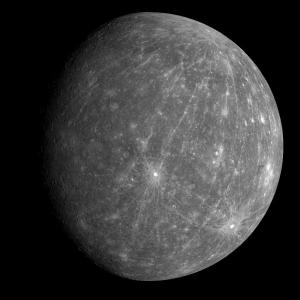
Data from the U.S. space agency's car-sized MESSENGER probe's latest close encounter with the planet nearest the sun on October 6 is helping to settle a debate dating back to the 1970s over the role volcanoes played in Mercury's history.
MESSENGER sent back images showing extensive and deep lava flows on the surface, including hardened lava more than a mile deep filling a crater 60 miles in diameter.
The unmanned spacecraft also detected a so-called "wrinkle ridge," a long geological feature on Mercury's surface about 2,000 feet high apparently caused by long-ago contraction of the planet as it cooled, the scientists said.
That's about twice as high as similar features seen on the surface of Mars, according to Maria Zuber, a Massachusetts Institute of Technology scientist working on the mission.
This was the second of three scheduled encounters before MESSENGER enters into orbit around Mercury in 2011. It flew past Mercury on January 14 and will return in September 2009.
Combined with data from January's fly-by, the new observations suggest Mercury was gripped by volcanic activity on a planetary scale, the scientists said.
"The bottom line is volcanism was very important in the history of Mercury," Mark Robinson of Arizona State University, another scientist working on the mission, told reporters.
Zuber said the widespread volcanism may have occurred 3.8 billion to 4 billion years ago. Mercury and the rest of the solar system formed about 4.5 billion years ago.
"This shows that's there's a lot more volcanism than we see on the surface of the moon, which has always been the planetary body we've compared Mercury to," added NASA scientist Marilyn Lindstrom.
Mercury's surface is a mixture of volcanic plains, craters caused by bygone impacts with space rocks and winding cliffs.
MESSENGER mapped about 30 percent of Mercury's surface that had never before been seen from a spacecraft, meaning about 95 percent of the planet has now been mapped.
The only previous occasions Mercury was visited by a spacecraft were in 1974 and 1975, when NASA's Mariner 10 flew past it three times and mapped about 45 percent of its surface. MESSENGER's January encounter covered another 20 percent.
With many scientists now classifying Pluto a dwarf planet, Mercury is considered the solar system's smallest planet, a third the size of Earth and only a bit larger than the moon.
MESSENGER, which stands for Mercury Surface, Space Environment, Geochemistry and Ranging, was launched in 2004.



Reader Comments
to our Newsletter